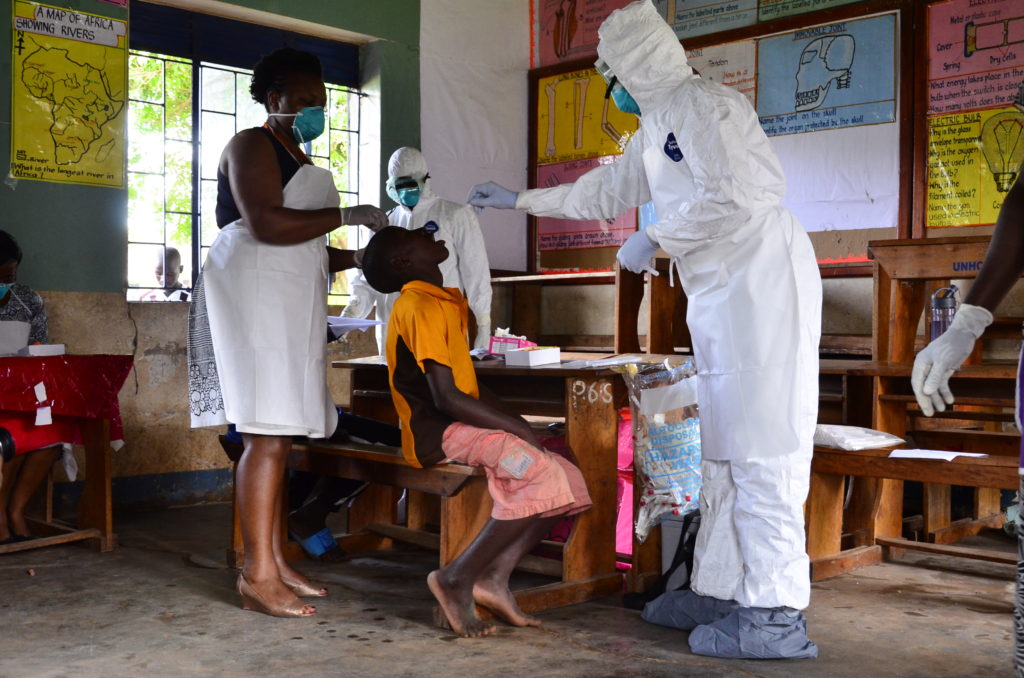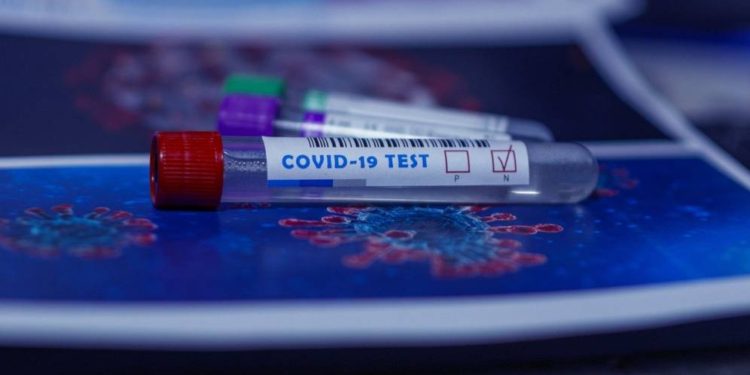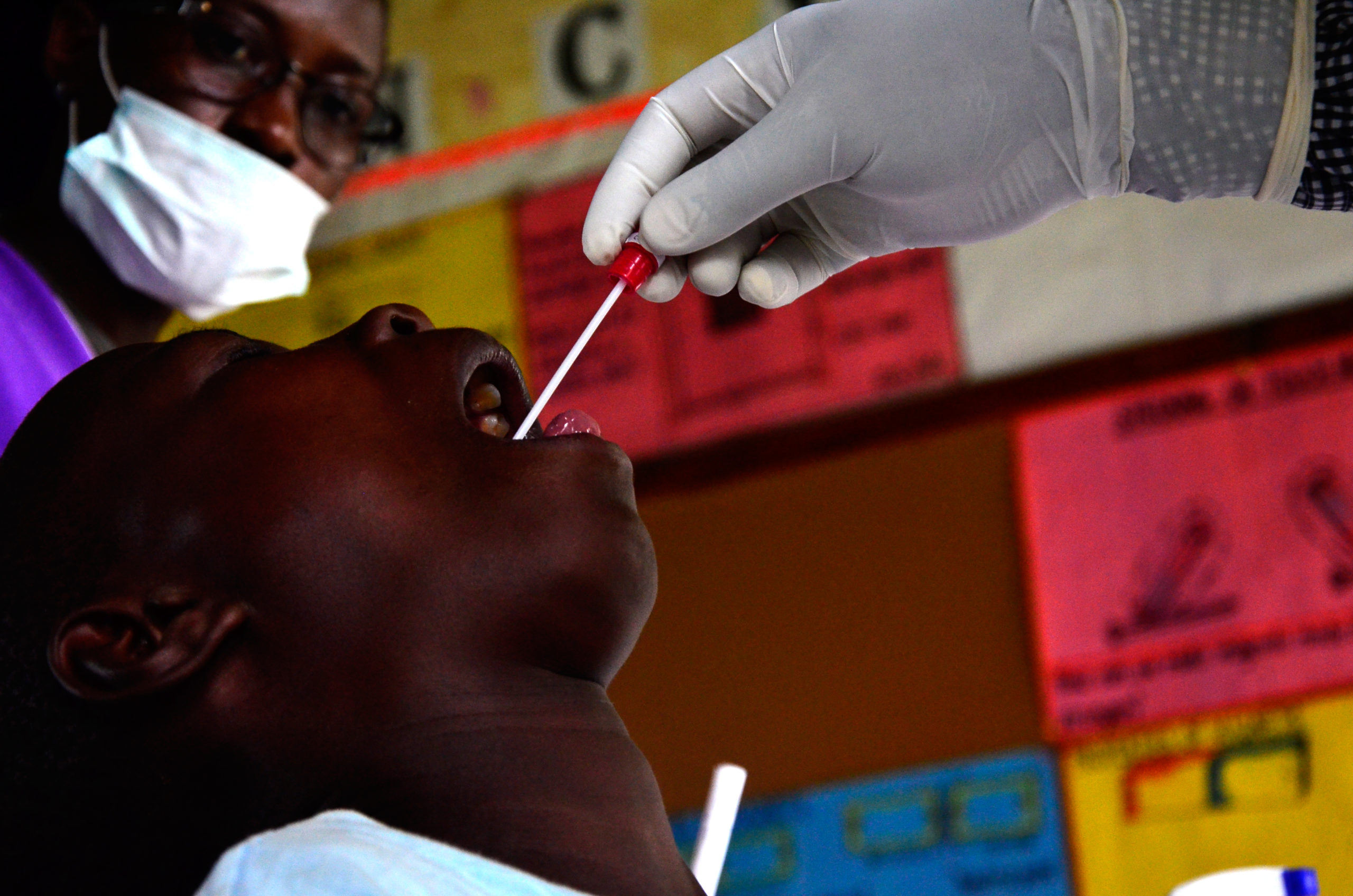By Dr. Ekwaro A. Obuku
Uganda has been performing nearly 15,000 Covid-19 tests per week. Yet, the health system heroes manning Uganda’s testing laboratories are some of the most neglected and least recognized healthcare professionals in the country.
Many of them have been working day and night to get Covid-19 test results released quickly. It is no wonder that Uganda’s public health laboratory network is one of the most highly rated in East, Central and Southern Africa. One quality assessment parameter is the turn around time of a test. The next time President Yoweri Museveni addresses the nation on the state of Covid-19, let us remember these unsung heroes. Better, the budget should reflect their crucial role in Uganda’s Covid-19 fight.
Mass testing for the novel coronavirus has been identified by the World Health Organization (WHO) as a game changer intervention in the global fight against the pandemic. Yet, recent events have raised concerns about Uganda’s testing infrastructure. With zero Covid-19 deaths until recently, Uganda’s apparent success in containing the disease has caused some to question if the daily pronouncements by the Ministry of Health were true. “Really doctor, is there COVID in Uganda?” became a common question on the street. Adding to the confusion were the conflicting test results for high ranking officials at the Office of the Prime Minister, reported in the Daily Monitor in June when a second test on the same officials delivered different results. More recently, Jaffari Balaba, the Local Council five Chairman of Bushenyi district reportedly rejected his positive test result and demanded a repeat test to be done.
Also, the asymptomatic aspects of COVID-19 added to the skepticism in Uganda. “…How can I be positive, when I am okay? That lab must be fake!…”, are not uncommon utterances from those affected. All of these factors have caused understandable doubts about the true nature of the disease, whether or not it really exists in Uganda, and the science behind our testing system.
In this article, I will explain how we test for Covid-19 and why it is that inconsistent or contradictory test results can come about. There are many factors that can influence these tests, and unfortunately this sometimes leads to inaccurate results, even when a patient is indeed suffering from the disease.
First and foremost, Covid-19 is highly infectious and deadly. The world took two months to reach the first 100,000 cases of Covid-19 and in only 7 months we stand at 23 million. Comparatively, the 2013 West African Ebola outbreak infected 28,000 people over 3 years, whilst 1.6 million worldwide caught “Swine Flu” (H1N1 influenza virus) between 2009 and 2010. Covid-19 is less deadly than Ebola, for example, which killed 40% of its victims during the outbreak in West Africa. However, due to the high numbers infected by the coronavirus, global deaths currently stand at 800,000 (3.5% case fatality rate), making this the most deadly pandemic in recent history. Comparatively, malaria infected 228 million and killed 405,000 in 2018 – a mortality rate of 0.2%.

In Uganda, there has been a recent rise in fatalities with 20 deaths recorded in the past month. Many of our East African neighbours have recorded higher numbers of deaths with 506 in Kenya, 246 in DRC, 47 in South Sudan and 21 in Tanzania. The geographically smaller Rwanda and Burundi have recorded 10 and 1 death respectively.
The silver lining in the Covid-19 pandemic is that nearly three quarters of those who contracted the disease, about 15 million people, had recovered by mid August 2020. Indeed early findings from Mainland China and The Diamond Princess (a cruise ship docked in Japan that became the scene of an outbreak), suggested many were asymptomatic with only 20 in every 100 patients of Covid-19 requiring hospitalisation. Of every 100 requiring hospitalisation, only five would require intensive care, which is statistically low; yet the sheer numbers of Covid-19 have overwhelmed even the most resilient healthcare systems in America and Europe.
Generally, there are six levels for assessing the utility of diagnostic tests in medicine. This article will examine the four most relevant assessment levels.
Firstly, technical efficacy – this measures physical features such as quality of the Covid-19 sample to be tested. This looks at the sample that was collected, how it was collected and what the expected yield of the germ is in that sample. Research has indicated that the nearer to the lung the sample is, the higher the yield of coronavirus. Currently, Uganda’s protocol collects samples from that boundary between the nose and the windpipe (naso-pharynx). Although it is safer than collecting from the lung (with less risk of infection to those gathering the sample), it yields a lower germ sample, which can affect the reliability of the test.
The second level of assessment is diagnostic accuracy efficacy. This is when a newly developed test is compared to an existing standard reference test known as the “gold standard”, usually one that detects the actual germ of interest. In line with the German scientist Dr. Robert Koch who discovered the tuberculosis germ in 1884, an ideal gold standard test would be to grow the germ itself. In this case the novel coronavirus from the collected sample, otherwise known as a “culturing test”. Again, this is a very risky process in which transmission can occur. Therefore, preference is given to less risky testing procedures that weaken the ability of the coronavirus to multiply, before testing is conducted. The thoroughness of laboratory technologists in following these procedures will affect the ability of the test to detect the coronavirus.
In reality, however, a range of factors will influence the reliability of the test apart from the quality of the sample collected. In a community where many people have the novel coronavirus, and many have developed symptoms of Covid-19, the diagnostic test will perform better. In contrast, where the burden of Covid-19 is very low (very few people have it), the epidemic is in its early stages with largely asymptomatic patients and the quality of the samples accessible are not from lung tissue, the diagnostic test will perform sub-optimally.
The thing about gold standard tests is that they tend to be cumbersome, requiring heavy equipment, highly skilled human capital, electricity and space. In Uganda and indeed for Africa, this means high maintenance costs hence difficult to deploy in smaller and rural laboratories countrywide where electricity is scarce. These heavy investments are made for central laboratories such as the Uganda Virus Research Institute in Entebbe. Currently, Uganda deploys a corona virus-detecting test, “PCR”, which stands for polymerase chain reaction. It detects the “DNA” of the virus even when it is dismembered as a safety step in conducting the test. Hence the world is searching for a simpler, cheaper, strip-like test known as “point of care testing”. Such a simple test would significantly increase access to Covid-19 testing to many Ugandans, as it would be less expensive.

Recently the Ministry of Health approved the MBN clinical laboratories, Lancet laboratories and Medipal International Hospital as the private entities to provide Covid-19 testing. In order to guarantee the suitability of any laboratory to perform Covid-19 testing, reference laboratories perform quality assurance assessments in these newly qualified laboratories for Covid-19 testing. Although the Uganda Virus Research Institute (UVRI) is the World Health Organization reference laboratory in the East African region, the Uganda Central Public Health Laboratory in Luzira holds this function overall.
Therefore, when a Ugandan is declared positive for Covid-19 in one laboratory then negative in another, many factors come into play: the quality of the sample tested; the performance of the test itself, the disease characteristics including its burden and finally the capacities in the laboratory matter a great deal.
A test result is said to be “false positive” when the initial test says a person is positive, when in truth that person does not have Covid-19. This truth is determined by the “gold standard” test. Whilst a “false negative” test, is when a test incorrectly finds someone as negative for Covid-19 when in fact they have it. Commonly, this would happen early on in the disease severity, that is, many asymptomatic cases in the community. When someone has all the symptoms the virus, in the body fluids is high and can easily be detected.
For the reasons described above, it is not an unexpected finding that two laboratories given the same sample and same diagnostic protocol may arrive at a different result. The best practice to resolve such a disagreement is by a consensus or tiebreaker test. Next time you think about saying “that laboratory is fake”, check if indeed this facility participates in the national laboratory quality assurance systems. The Central Public Health Laboratory (CPHL) should conduct an audit with a view to strengthening the diagnostic pathways for Covid-19 as part of the standard response to such controversies. A key area of investment is human capital.
In any case, medical doctors also interpret test results by capturing findings from interviews with the patient. For example, travel history suggestive of contact and examination for signs and symptoms of Covid-19 – cough and fever being the most common. This third level of test assessment is the diagnostic thinking efficacy, which if coupled with the therapeutic efficacy can influence the decision of the medic to treat for Covid-19 or not. If treated, the outcome of the patient in terms of whether they recover or not, their quality of life after recovery or death form the assessment package of the utility of the diagnostic test. It is here that in the dark 1990s, Ugandans were reluctant to be tested for HIV, as AIDS had no treatment at all. Many survivors of Covid-19 report living with extreme difficulty in breathing among other complications that have lowered their quality of life.
Societal efficacy of a diagnostic test looks at the affordability of the Covid-19 test to the community. This evaluation incorporates the effectiveness of the Covid-19 test, hence “cost-effectiveness” from the perspective of the common man. Otherwise small issues such as transport costs from home to the laboratory to get tested for Covid-19 are captured in the assessment of societal efficacy. In one of the many presidential addresses, Mr. Museveni mentioned that a single test costs $65. More recently, the three approved private laboratories put a price tag of Uganda shillings 300,000 per test. This raises a number of concerns. First, Uganda has done very well with over 275,000 tests to detect about 3,000 people with Covid-19 including foreign nationals such as cross border truck drivers. From a simple economic evaluation, this translates to a cost of at least 28 million shillings per person found to have Covid-19. This is up to five fold the cost-effectiveness threshold according to the World Health Organisation’s ‘Choosing Cost Effective Interventions’ approach (CHOICE). Obviously, Uganda needs to find a cheaper test that can easily be used in smaller clinics to reach out to more people.
Secondly, the initial Covid-19 deaths in Uganda were outside the national diagnostic pathway. This pathway involved testing most-at-risk populations at border points of entry, institutional quarantine and government health facilities only without the participation of private clinics and hospitals. As a result, the first recorded Covid-19 death in Uganda happened at Mengo Hospital. Every policy intervention creates new policy problems. While it is a plus to include the three private laboratories, this has left the common Ugandan with a bill of Shs. 300,000 per test which is the average monthly income for salaried workers in Uganda. Noteworthy, financial barriers were the reason Mr. Museveni banned cost sharing in his 2001 Presidential campaign. Thus, the government could subsidize this diagnostic testing price in a Public-Private-Partnership with these laboratories to expand quality assured Covid-19 tests to even the poor.
In sum, Covid-19 is real and a misunderstanding of the test procedure and the factors which can influence the results must not confuse us. People should get a test if they have signs and symptoms suggestive of infection or if you have come into contact with a patient. Testing for the disease will not kill.

Dr. Ekwaro A. Obuku, MB ChB, MSc Clinical Trials, FICRS-F is the former president of Uganda Medical Association.
Email: ekwaro@gmail.com
Twitter: @ekwaroobuku









Comments 1